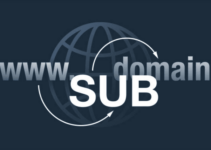
An Educational Revolution Is On The Horizon
One of contemporary America’s tragedies is that the vast majority of its population is illiterate or undereducated. We lack systems that enable all parents, or even the majority of parents, to swiftly and readily obtain a quality education for their children.
Harlem Children’s Zone in New York City is one of the greatest secondary schools in the world, yet it must accept students via lottery due to its low resources and hence limited openings. To gain admission, you must be fortunate.
Consider how much more money it could earn if it could multiply its resources by reaching out to a far wider number of pupils over the internet. There is a possibility that no one will be excluded. The vast majority of American youngsters just lack access to quality education.
Online or remote learning has the potential to significantly increase a huge number of people’s access to high-quality education. Even if education in a brick-and-mortar environment remained higher in quality for the few who can afford it, the excellence of distance education may become superior in many ways to anything else the bulk of people can currently purchase.
Acceptance of online education on a large scale would result in a significant boost in opportunity for entire societies.
The entire American democratic concept is predicated on the ability to provide equal opportunity to all people, and this would represent a new level of possibility for Americans, let alone the rest of the world.
Online education is very much alive and thriving in higher education at the moment. College does not require students to leave their homes. Distance education has been an academic option for nearly half a century.
Since the Covid 19 epidemic prompted students to stay at home and Zoom into their lectures, taking lessons online has grown in popularity.
MIT, the University of Illinois, the University of Pretoria, the University of Phoenix, Indira Gandhi National Open University, and China Central University in Beijing are among the world’s pioneers in the discipline.
Meanwhile, most colleges saw online classes as a small compliment to a fundamental teaching methodology: lecture halls complemented by lab and discussion sessions or studio work.
It took a pandemic to rouse the rest of us up to the value of advanced education delivered online.
It’s logical. “Universities win by increasing students without having to construct classrooms and accommodation,” writes Brittanica.com, “while students reap the benefits of being able to work where and when they choose.
Without the need for several classrooms, specialty courses might be given in public schools. Additionally, homeschooled children may be “given a gateway to centralized instruction.”
Certain universities are well aware of this and have reaped the benefits for years.
We spoke with Bruce Peters, an organizational learning expert with decades of experience working throughout the country. He informed us that around a decade ago, MIT was a pioneer in the field of Massive Open Online Courses.
In 10 years, it has enrolled 1.2 million students in its online Introduction to Computer Science course. Online education is becoming more prevalent throughout the world.
According to Peters, the University of Illinois was the first institution to offer an online MBA degree, with others following suit. Louisiana State University’s online MBA programs begin at $12,474.
Kevin Werbach, the author and a distinguished professor at Wharton, regularly teaches an online course on “gamification,” the process of transforming many beneficial activities into games.
As of Feb. 3, 2022, his registration for the class beginning that day exceeded 130,000, at a tuition fee of $95 per student. Calculating price/volume demonstrates why schools must embrace this paradigm shift away from the old brick-and-mortar model of acquiring a college degree.
The level of intimacy with faculty and friends, the rite of passage into adulthood as a group, and the easy and conversational Socratic back and forth with instructors both in the halls and classrooms, as well as in offices and labs, are all advantages that can’t be easily replicated with distance learning. This can be accomplished in virtual environments, but not with the same ease or success.
Harvard Business School, Stanford University, Duke University, Wharton University, MIT, Yale University, and other top business schools will continue to thrive because they provide hives of highly intelligent peers, future associates and contacts, and a network that will form and solidify throughout a student’s career.
The aristocracy will continue to congregate on university campuses. The cost of sitting inside the hallowed halls will increase as the ivy grows thicker on the walls.
On the other hand, technology has the potential to provide the majority of students with precisely what they require at an affordable price. Why is it that technology is unable to provide a new level of intimacy: quick online networking based on common interests rather than physical proximity? Geographical distances are irrelevant.
It can now be accomplished by a group of ideally matched team members who could not have previously learned together. Teachers are accessible in ways that they are unable to be physical. Due to the internet, affinity groups can be found worldwide.
Physic, health, science, and the humanities are all acceptable subjects. Instead of a scheduled lab or section on campus, every tiny interest group can instantly become a Zoom breakout room.
Advanced education demands visionaries committed to democratizing education. We need more innovators in education along the lines of Elon Musk, Bill Gates, Sergei Brin, and Larry Page: individuals who recognize a problem and devise a solution. Governments could do the same thing but are unlikely to.
The crisis is incontrovertible. The bulk of this country’s — and the world’s — population cannot afford a traditional college education. Even students from prosperous middle-class families will be saddled with decades of debt after six years of education and the purchase of a property. Student debt is now expected to total over 1.6 trillion dollars.
Why? The enormity of a college’s or university’s tuition is used as a proxy for quality—the higher the price, the superior the pedagogy. Education costs do not decrease as a result of competition between schools.
The objective is not to give as many kids as possible the invaluable educational resources available at our top institutions and then to use that knowledge and talent to improve everyone’s quality of life.
On the other hand, universities restrict enrollment and price their degree programs in a manner similar to how markets price diamonds.
Competition’s steady downward pressure on prices, as it does virtually everywhere else in a free economy, is missing here. We collect and safeguard the abilities of the best instructors, reserving them for a select few.
If Harvard and Princeton, the University of Michigan, the California system, and other universities had accepted the goal of producing the greatest good for the greatest number of people, millions of people might attend online lectures by the world’s most gifted and intelligent academics.
Fortune magazine’s Alan Murray gave me an email about a recent merger, which prompted me to consider this.
According to Axios’ executive summary, the transaction marks a watershed moment for the ESG movement, which advocates for a form of corporate governance that benefits society and the environment.
To put it another way, stakeholder capitalists are having a good time. According to the corporation, “Blackbaud’s software enables schools and organizations to manage employee giving and volunteering,” empowering employees to explore ways to contribute to the greater good.
Meanwhile, EVERFI delivers software for teaching financial literacy, health, and wellness to over 25,000 elementary schools in the United States, as well as banks and other enterprises. It promotes social good for those who may be using Blackbaud’s systems to improve their own lives and help their communities develop better futures.
The deal, Axios reports, is a win for educational technology. Two cutting-edge technology companies committed to improving the world have united to create a stronger force for good. And at the heart of it all is online education. Effective online schooling is possible.
The timing is ideal for this. But we need a lot more businesses like Blackbaud and EVERFLI, which see a huge opportunity in the technology field they’re in.
Innovative enterprises with a broader vision can provide social justice for all by figuring out how to put networked software to work for any learner.
If groups like these recognize the broader issues at stake and leverage their efforts to reduce the cost of education while increasing access, this is an idea that might enable every K-PH.D student to receive a better effective education at a lower cost.
Elite institutions could benefit by significantly lowering the cost of online attendance and expanding access to lectures: millions more people could enroll in programs.
They compensate for lower tuition costs by tenfold expanding volume. What may be overlooked in such a merger is that social justice currently entails an affordable advanced education in any field, on any subject, for the vast majority of the American population, which can barely afford a house and a college degree concurrently due to wildly rising inflation in those big-ticket items.
To suggest that there is much work to be done would be an understatement. Opposition to it will be severe at the most well-funded universities. Infoworld summarises our situation succinctly:
“Students who are now enrolled in regular schools and colleges via distance education indicate that the quality of their educational experience has worsened in study after survey.”
Additionally, they assert that schools and universities are unprepared for online learning and that the present tools are out-of-date and difficult to use. There are regular outages, and the channels of contact between students and professors are frequently difficult to navigate.”
It’s simple to see how firms like Blackbaud, with their digital experience, could step in to assist in streamlining these processes—with the assistance of our current institutions. However, if that occurs, the critical next step is for our colleges to adapt to new economic realities.
They must provide high-quality, low-cost education by developing value-creating systems that rely less on the traditional indicator of educational quality—the name of a prestigious school on the diploma—and more on metrics that track the curriculum’s outcomes for the student, as well as reliable testing that verifies what has been learned.
If most people no longer care about the cost of education, a wealth of instruction and knowledge may be made available to a potentially large student body.
While the cost of online education should be significantly less than the cost of traditional campus education, the cost of traditional education may remain constant or increase. This did not occur throughout the pandemic.
“There does not appear to be significant cost savings associated with online remote learning as compared to tuition that includes supporting classrooms and other structures that enable in-person education,” Infoworld says.
Harvard University announced last year that beginning with the first semester of the school year, all course instruction would be conducted online. However, tuition for the entire year would stay the same at $49,653.
That might entail paying a $200K tuition cost with a student debt that will take years to repay—possibly by a child who never set foot in a classroom.”
There should be a way for educational institutions to make their superior curriculums and talented professors available to the majority of students while still maintaining the elite premium attached to on-campus schooling, with its rich social networking opportunities and potentially deeper and more nuanced learning experiences.
This small merger of two distance learning enterprises with a social purpose is unlikely to transform the world immediately, but the individuals involved should consider it in these terms in the future.
Others who are in a position to bring a new disruptive paradigm to higher education should take note of what is occurring here. It is efficient, just, and has the potential to be enormously profitable; it is also democratic in the sense that it benefits students worldwide.

Quick Links:




